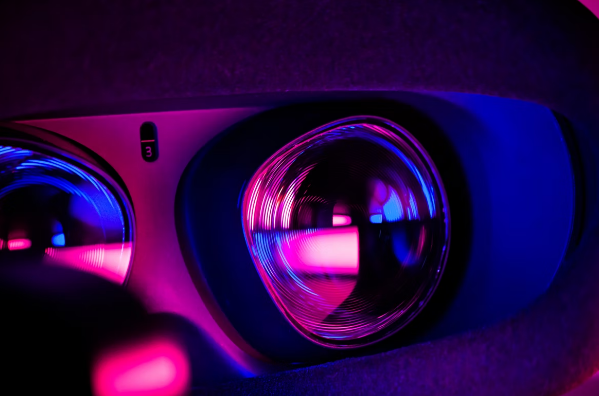Virtual reality is something that everyone who uses the Internet or plays video games has at least once heard about.
But what is virtual reality technology? How does it help to experience new sensations in an interactive world and opens up opportunities for work and learning? Let’s figure it out together.
What is virtual reality in a nutshell?
Let’s start with the basics – the virtual reality definition. VR is a world made by computers and experienced by a person through their senses, including sight, smell, hearing, touch, and others. The tech simulates action as well as reactions to the action.
Do not confuse VR and AR!
VR confines the user in the digital realm while blocking out the outside world. VR is when you put on a headset and find yourself in a rough zombie battle with no way out.
At the same time, AR combines the real environment with elements from the digital realm. When a Dragonite pokemon unexpectedly arrives on the sidewalk in front of you while you are crossing the street, this is AR.
VR development is moving towards creating complete immersion when a person doesn’t feel the difference between the real world and the virtual one. Although specialists that have expertise in VR software development have a question about whether this is possible in general, there is no unequivocal answer to it yet. So hopefully, soon, we’ll experience the fullest possible immersion.
How virtual reality works?
The most popular VR gear is a headset that leads to immersion. A computer system receives data from the body-mounted gyroscope and accelerometer, which keep track of head movements and adjust the virtual image accordingly. In a virtual world, the user may “look about” and feel as though they are in the actual world.
VR equipment may detect a user’s pupil movements to determine where they are looking using tracking technologies. For maximum realistic immersion, they could also be able to track their body motions and imitate them in the virtual world.
Old-fashioned 2D controllers like mice or joysticks are now replaced with 3D controllers since they are insufficient to interface with virtual reality.
Developers also designed haptic devices to allow people to feel everything that happens in the virtual world. Traditionally, this is possible thanks to vibrating joysticks and swivel chairs.
All in all, any VR experience should involve at least one of the following objects:
- VR suit
- VR headset
- Gloves
- VR room
Virtual reality types
Here are some types of VR tech that can be clearly distinguished:
- Immersive VR technologies offer a very detailed and accurate recreation of the virtual environment. Their implementation needs a powerful computer that can recognize human inputs and react to them instantly, as well as special gear that provides an immersive effect.
- Non-immersive VR technologies or simulations that are transmitted on a screen, preferably a widescreen one, with visuals, sound, and controllers. These systems are categorized as virtual reality even if they don’t fully meet the standards for VR since they have a far greater influence on the viewer than other multimedia tools.
- Collaborative environments. These include the game Minecraft and Second Life, a 3D environment with social networking features that have over a million active users. These words don’t offer total immersion. But they have a greatly organized interaction between gamers/users, which is sometimes absent in “actual” virtual reality goods.
- Internet-based VR. It’s like the HTML version of VR Markup Language. Although this technology is currently regarded as outdated, it’s feasible that virtual reality will one day be developed using the world web.
Where is VR used?
Virtual reality is widely used in the entertainment industry. Most often, VR is used in games. This allows the player to be a part of the game world, get used to the role of their character, and feel the story of the game most deeply. For example, VR can help add interactivity: wave your hand to cast a magic spell or rotate an object to solve a puzzle.
VR tech also allows you to get a completely new experience from watching movies, sports, and performances of your favorite musicians.
Moreover, VR can be used outside of the entertainment area.
- Education: here, VR helps to make school lessons visual and exciting and creates a training environment for those activities where high-quality training is needed, for example, flying an airplane.
- Medicine: allows remote control of robots performing surgeries or examining patients.
- Science: makes it easier for scientists to work with different models.
- Architecture and design make it possible to model what will then be embodied in the physical world.
- Conferences with immersive effect. This solution becomes an alternative to the already familiar video calls and gives a brighter sense of belonging. Virtual reality can act as a platform for creating virtual installations or museums, opening them up to a new audience.
The future of virtual reality
Although there is a lot of talk about VR, and you can already try this technology in action, there is still room for development. It is assumed that, first of all, specialists will strive for the greatest realism of virtual reality:
- creating a feeling of particularly deep immersion;
- expanding human capabilities in VR;
- improving interaction with virtuality.
On the other hand, further progress is undeniable, which means more expensive VR equipment, and this is a problem. Many companies are trying to reduce the cost of VR devices in the future so that more people can immerse themselves in VR for study or entertainment.



